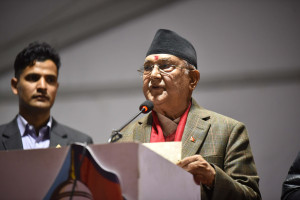Editorial
Back to the drawing board
The battle to legalise abortion in Nepal was hard won. Hindered by patriarchal notions nullifying the fundamental right of women to health and life, Nepal made huge strides forward in 2002,
The battle to legalise abortion in Nepal was hard won. Hindered by patriarchal notions nullifying the fundamental right of women to health and life, Nepal made huge strides forward in 2002, when a bill permitting abortion under broad grounds was signed into law. Abortion is legal in Nepal under certain conditions regarding time of gestation, and extenuating circumstances such as rape or risk of life.
In 1996, for every 100,000 live births, 539 women died because of unsafe abortion, or little or no access to health care. Owing partly to foreign assistance supporting awareness campaigns, family planning and reproductive health services, this figure fell to almost half (281) in 2006 and further down to 258 in 2015. Nepal’s tumultuous political history has resulted in considerable reliance on outside help—particularly on the United States as the largest donor—for the provision of health care.
However, the US’s Global Gag Rule entails a stoppage of US government funding to overseas organisations that provide legal abortion services or counselling to women on abortion. Aid is thus dependant on the political whims of whoever holds the position of US President. The uncertainty is evident in the vacillations between the GGR’s enforcement by pro-life Republican presidents (beginning with President Ronald Reagan) and its retraction by pro-choice Democratic presidents.
Now, President Trump’s assumption of office has resulted in the global enforcement of his questionable view that women should be punished for abortion through the implementation of the GGR.
If the GGR is enforced, Marie Stopes International, an INGO working on contraception and safe abortions, estimates that Nepal would be severely affected by the withholding of over $5 million worth of US funding, resulting in 136,800 unintended pregnancies, more than 41,000 unsafe abortions, and 133 maternal deaths in the next three years. Although eight countries (Sweden, Denmark, Belgium, Luxemburg, Finland, Canada, and Cape Verde) have joined an initiative to account for the $600 million global shortfall caused by the GGR, the future of reproductive health services in Nepal remains uncertain.
A glimmer of hope has presented itself in an announcement by the government of Nepal to provide free abortion services in its 2015-16 budget. However, implementation guidelines are still in the works. We hope that this process will be expedited. Unless the Nepal government irons out these plans, the GGR is likely to have huge repercussions due to withheld US aid earmarked for the purpose of supporting reproductive health services in Nepal.




 10.12°C Kathmandu
10.12°C Kathmandu














